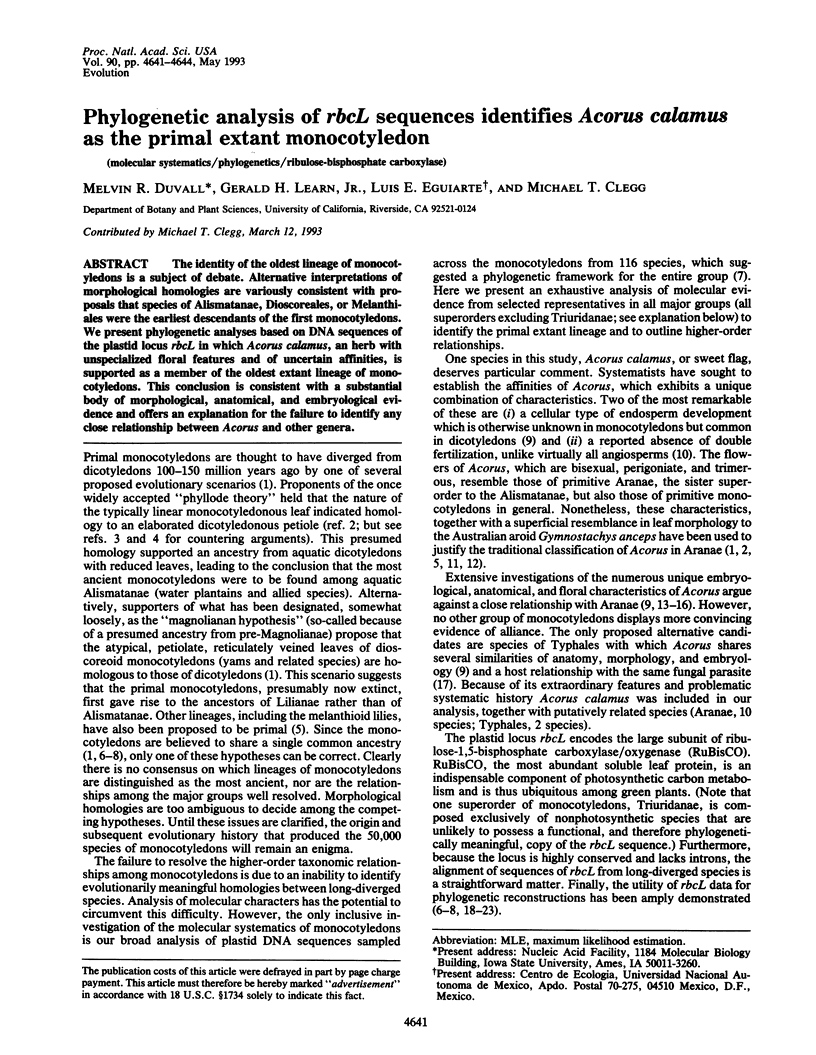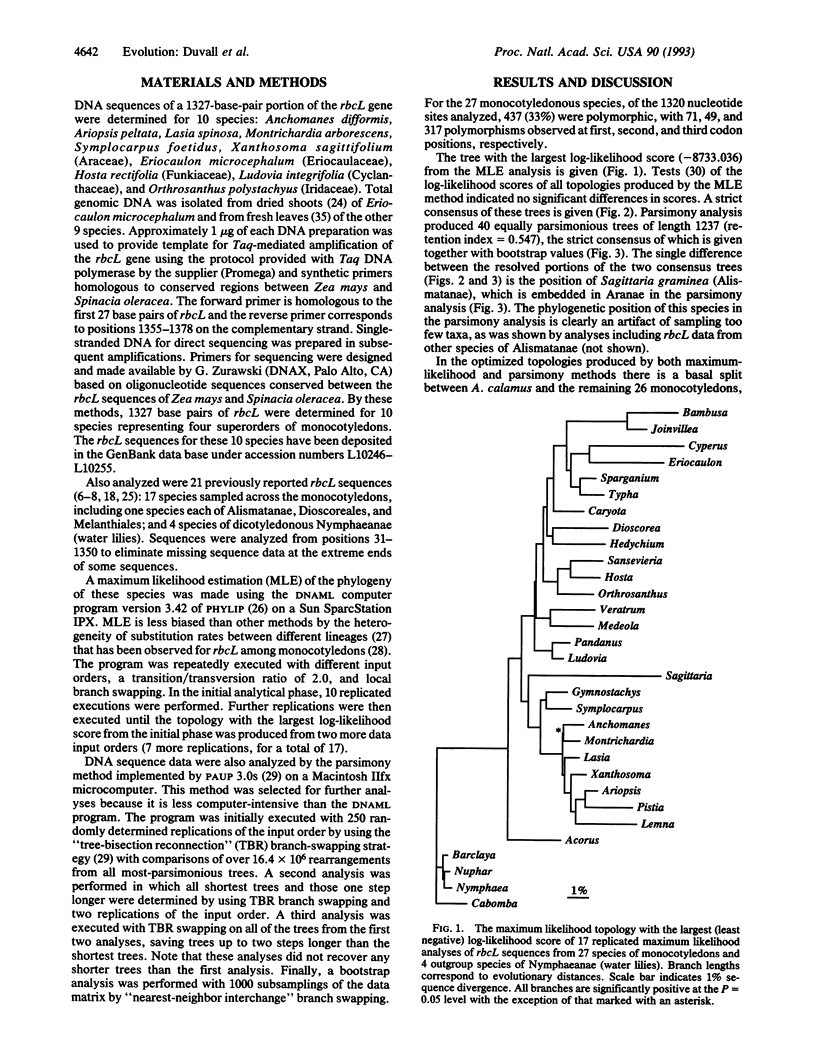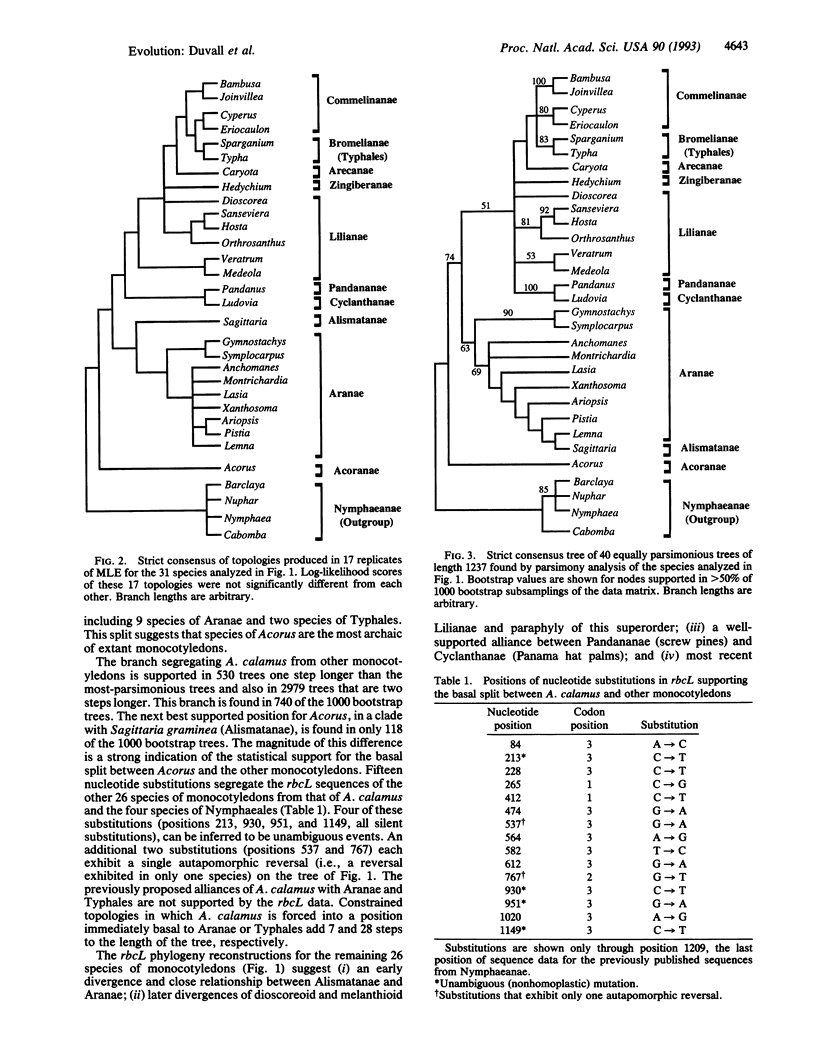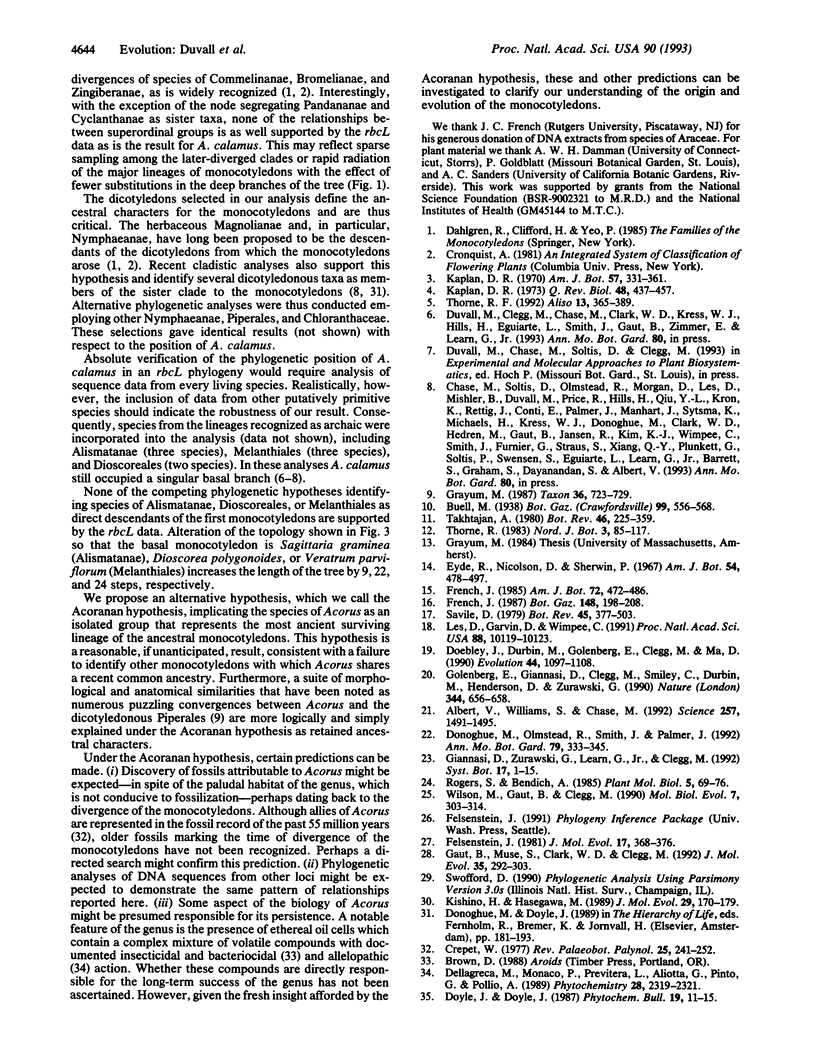Abstract
The identity of the oldest lineage of monocotyledons is a subject of debate. Alternative interpretations of morphological homologies are variously consistent with proposals that species of Alismatanae, Dioscoreales, or Melanthiales were the earliest descendants of the first monocotyledons. We present phylogenetic analyses based on DNA sequences of the plastid locus rbcL in which Acorus calamus, an herb with unspecialized floral features and of uncertain affinities, is supported as a member of the oldest extant lineage of monocotyledons. This conclusion is consistent with a substantial body of morphological, anatomical, and embryological evidence and offers an explanation for the failure to identify any close relationship between Acorus and other genera.
Full text
PDF



Selected References
These references are in PubMed. This may not be the complete list of references from this article.
- Albert V. A., Williams S. E., Chase M. W. Carnivorous plants: phylogeny and structural evolution. Science. 1992 Sep 11;257(5076):1491–1495. doi: 10.1126/science.1523408. [DOI] [PubMed] [Google Scholar]
- Felsenstein J. Evolutionary trees from DNA sequences: a maximum likelihood approach. J Mol Evol. 1981;17(6):368–376. doi: 10.1007/BF01734359. [DOI] [PubMed] [Google Scholar]
- Gaut B. S., Muse S. V., Clark W. D., Clegg M. T. Relative rates of nucleotide substitution at the rbcL locus of monocotyledonous plants. J Mol Evol. 1992 Oct;35(4):292–303. doi: 10.1007/BF00161167. [DOI] [PubMed] [Google Scholar]
- Golenberg E. M., Giannasi D. E., Clegg M. T., Smiley C. J., Durbin M., Henderson D., Zurawski G. Chloroplast DNA sequence from a miocene Magnolia species. Nature. 1990 Apr 12;344(6267):656–658. doi: 10.1038/344656a0. [DOI] [PubMed] [Google Scholar]
- Kishino H., Hasegawa M. Evaluation of the maximum likelihood estimate of the evolutionary tree topologies from DNA sequence data, and the branching order in hominoidea. J Mol Evol. 1989 Aug;29(2):170–179. doi: 10.1007/BF02100115. [DOI] [PubMed] [Google Scholar]
- Les D. H., Garvin D. K., Wimpee C. F. Molecular evolutionary history of ancient aquatic angiosperms. Proc Natl Acad Sci U S A. 1991 Nov 15;88(22):10119–10123. doi: 10.1073/pnas.88.22.10119. [DOI] [PMC free article] [PubMed] [Google Scholar]
- Wilson M. A., Gaut B., Clegg M. T. Chloroplast DNA evolves slowly in the palm family (Arecaceae). Mol Biol Evol. 1990 Jul;7(4):303–314. doi: 10.1093/oxfordjournals.molbev.a040605. [DOI] [PubMed] [Google Scholar]


